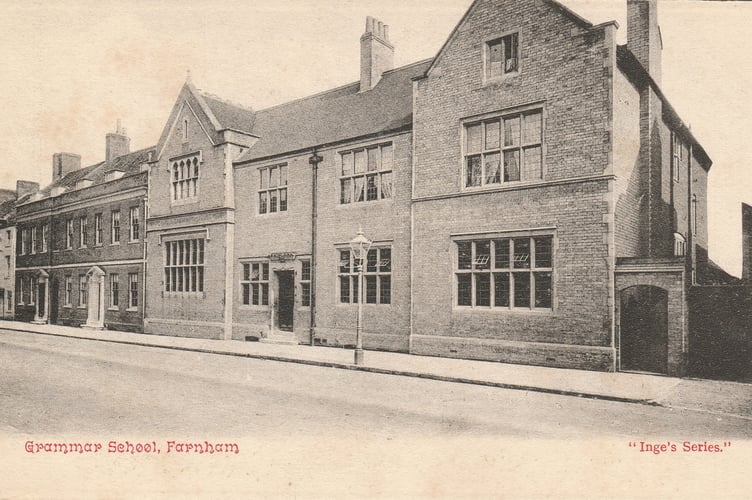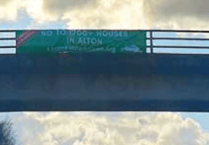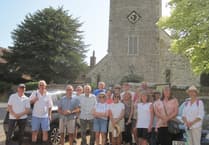This year sees the 50th anniversary of the introduction of the comprehensive education system, which brought about major change for schools around the country.
Last week in Peeps, we looked at the history of Farnham Girls’ Grammar School, which disappeared with the changes.
This week we put the spotlight on the boys’ school – Farnham Grammar School – that also ceased to exist, being merged with the girls’ school to form Farnham College.
Unlike the girls’ school, which was in existence for little more than 70 years, the boys’ grammar school could trace its roots back more than four centuries to 1560 (a fact that tells us much about attitudes regarding the education of girls!)
In that year an application for a licence to build a school in Farnham is recorded to have been made, while the first evidence that it was built is a record of a yeoman donating 20 shillings “to the maintenance of the school of Farnham” in 1585.
It is possible, however, that the origins of the school go back much further to 1351 when a chantry was established at Farnham Castle, later being transferred to the parish church.
Chantry priests often took on an educational role, teaching the urban poor and rural residents, and when the chantries were closed by Edward VI, some of them are known to have become grammar schools.
Whatever its true roots, during the 17th century records show the school was receiving various gifts and bequests from benefactors, including Dr Harding of Frensham – president of Magdalen College, Oxford – who left rent of £10 annually to the school.
It appears the school was at this time sited next to the parish church as a court record from 1657 states John and Nicholas Brown had to sell land they acquired dishonestly and pay the money raised to “the schoolmaster of the town of Farnham... teaching the Latin tongue in the schoolhouse adjoining the church of Farnham”.
Despite the donations, by 1758 the school building was dismantled and the materials sold to allow for the enlargement of the churchyard, so it may have been at this point the school was relocated to West Street where the Bishop of Winchester, George Morley, had left the schoolmaster a dwelling, a garden and several tenements some 78 years earlier.

The next century and a half saw various ups and downs. In 1788 there were just eight boys and in 1800 there was controversy when a new schoolmaster arrived from London bringing 12 pupils with him – and refusing to teach any others.
Things improved by 1872, when a new dormitory and schoolroom were added, while the school was partly rebuilt in 1893 by several old boys.
A newspaper advertisement from 1883 boasted the school “offers an education which is a suitable preparation for commercial life or for entrance into the learned professions,” and that in the past year 50 certificates had been gained by pupils in the Cambridge Local Examinations, the examinations of the College of Preceptors for teachers, the Department of Science and Art and the Society of Arts.
The school remained in West Street until 1906 when the building was sold to Surrey County Council to house the girls’ grammar and new premises were built for the boys in Morley Road.
This followed the introduction of the 1902 Education Act under which funding of grammar schools became the responsibility of newly-formed local education authorities that were also empowered to establish new secondary schools.
Entrance to the school was subject to the payment of fees or by scholarships awarded on merit until the common entrance examination (more commonly known as the 11-plus) was introduced under the 1944 Education Act.
Farnham Grammar School ceased to exist as such in September 1973 when it was merged with Farnham Girls’ Grammar School to form the town’s first sixth form college – Farnham College – on the Morley Road site.
Peeps would love to hear from the last year group to pass through grammar schools in the area.
Please email [email protected] with your memories and any photographs.




